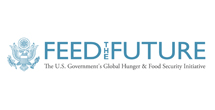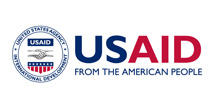Herbicide use on wheat and impacts on honeybees
Project title: Effects of Herbicide Application in Wheat Crops and on Honeybee Populations in Ethiopia
Lead researcher: Sintayehu Fetene, Madda Walabu University
Co-researcher: Dr. Tibebu Habtewold, Research and Development Advisor
Research report: download the research report fetene-habtewold-herbicide-bees-report
Research summary
After South Africa, Ethiopia is the second-largest wheat producer in sub-Saharan Africa. Over 4.7 million households are involved in wheat production annually, producing about 3.9 million tons of wheat across 1.6 million hectares of land, with average productivity of 2.4 t/ ha. However, national wheat production does not meet the country’s demand. The annual estimated deficit of 25– 30% is met by imported grain. Wheat is among the most important crops in Ethiopia, ranking fourth in total cereals production after maize, sorghum, and teff. It is grown as a staple food in the highlands at altitudes ranging from 1,500 to 3,000 meters above sea level. Nearly all wheat in the country is produced under rain-fed conditions, predominantly by small farmers. Production volumes have been increasing due to the implementation of improved packages in which herbicide is one component.
Herbicide use has become widespread, along with an agricultural intensification program and the need for increased food production for food security. Farmers in Ethiopia often cannot cope with heavy weed infestation during the peak period of agricultural activities because of a labor shortage. Most fields are weeded late or left un-weeded, resulting in remarkably reduced production. Hence, herbicidal weed management is indispensable, especially when there is a labor shortage. The herbicides 2,4-D, Roundup/Glyphosate, Topic, and Palace are commonly used, separately or in combination. It is not uncommon to find peasant farmers in rural Ethiopia using or overusing these herbicides without fully understanding the undesirable consequences on bees and other crop pollinators, on bee forages, and on other non-target organisms, and on the environment at large.
Ethiopia is endowed with enormous and untapped apicultural resources. Long-standing traditional beekeeping practices are well established in almost all parts of the country and contribute to household food security and livelihood by providing income, quality food, and assets to beekeepers. With about seven million honeybee populations, the country ranks as the ninth-highest honey producer in the world and the leading producer of honey and beeswax in Africa. The country’s annual honey and beeswax production is estimated to be over 54,000 tons and 5,000 tons, respectively. However, the share of this sub-sector in the GDP has never been commensurate with the huge numbers of honeybee colonies. Production and productivity have been low, leading to low utilization of hive products domestically, and relatively low export earnings. Among the most limiting factors is the ever-increasing grievance of pesticide effect on bee colonies. Product decline has considerable economic impacts on smallholder beekeepers. The decline is due to a common package practice of increasing wheat production and productivity without due attention to the huge apiculture potential in many regions.
In view of the above, this research was initiated with the objective of assessing the effects of herbicide application in wheat crops and on honeybee populations in three major beekeeping districts of Endamekhoni (southern Tigray Zone, Tigray Region), Dangila (Awi Zone, Amhara Region), and Agarfa (Bale Zone, Oromia Region). A mix of both quantitative and qualitative methods of assessment was employed. Formative data were collected from beekeepers and DAs using structured questionnaires, and in-depth interviews were conducted with key informants. Discussion with focus groups for qualitative information was conducted and analyzed. In summary, the analysis of data revealed that the majority of beekeepers in Endamekhoni have abandoned the use of herbicides in their wheat fields over the past five years or so and instead practice hand-weeding using family labor. They obtain a better yield and quality of honey. On the other hand, farmers in Dangila and Agarfa districts continuously use herbicides in their wheat fields, with consequential loss in the populations of bee colonies and in the amount of honey harvest and its quality, damage to bee forages, and toxicity to crop and pollinators and the environment at large. Hence, there is a need for an integrated and sustainable crop-apiculture development strategy based on bio-intensive IPM and ecological principles and practices in the three regions. This strategy should be implemented through a system approach to fight system bottlenecks of high levels of illiteracy, inadequate enforcement of policies and legal standards, inadequate safety precautions and safety devices, improper herbicide labelling, and insufficient knowledge base in general.


